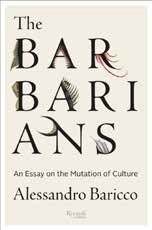Mapping Italian Contemporary Literature
Tracing a map of contemporary culture is always a difficult task, especially when it comes to literature, where visibility, high sales and international recognition are not always a synonym for quality. Most of the time, in fact, interesting or avant-garde cultural phenomena occur under the surface of the publishing market, far from the spotlight of literary prizes. Bestseller lists and literary awards should therefore not be taken as an exhaustive guide to contemporary literature. Many talented authors often come from small publishing houses, which hardly have access to institutional forms of recognition. It is not infrequent, however, that promising writers launched by small or medium publishers are later picked up by major publishing houses and become literary successes. This has been the case for such brilliant authors as Andrea Bajani, Nicola Lagioia, Giorgio Vasta and many others.
Any attempt to draw a map of Italian contemporary literature is made even more difficult by the recent development of new media, which offer aspiring writers the possibility to get their manuscripts off their desks and into the marketplace, thus breaking the bottleneck of traditional distribution. The vast, largely unexplored world of self-publishing is, however, not always a breeding ground for talent, but can rather be a multiplier of mediocrity and amateurism.
In this context, literary prizes can be a helpful, although by no means conclusive, criterion for mapping some relevant trends in the fragmented, ever-changing Italian literary scene. In Italy there are currently about 1,800 literary prizes. One of the most prestigious is Premio Strega, annually awarded to the best work of fiction by an Italian author. Among its winners are some of the greatest masters of Italian literature, such as Ennio Flaiano (1947), Cesare Pavese (1950), Alberto Moravia (1952), Giorgio Bassani (1956), Elsa Morante (1957), Dino Buzzati (1958), Giuseppe Tomasi di Lampedusa (1959), Natalia Ginzburg (1963), Primo Levi (1979), Umberto Eco (1981), and many others. Begun in 1947 within the literary circle hosted in Rome by intellectuals Maria and Goffredo Bellonci, the prize established itself as a vehicle for cultural reconstruction in the postwar and post-Fascist Italian society, with the support of Guido Alberti, owner of the company that produces the famous Strega liqueur. Over the years, it has remained an essential reference point for those who wish to get an insight into the Italian literary scene.
However, if we look at the award-winning writers of the last decades, can we really say that the new generation of literary talents has been able to keep up with the great masters of the past? In his interesting book The Barbarians – An Essay on the Mutation of Culture, famous Italian writer Alessandro Baricco claims that, for the gatekeepers of traditional culture, the rise of young ambitious outsiders is experienced as a sort of barbarian invasion. Whether we are talking about wine, soccer, classical music or books, the new protagonists of contemporary culture seem to have no sense of history, value spectacle over specialization, quantity over quality, and have steered the world towards a mutation that appears as threatening as a “loss of soul”.
This alleged eclipse of highbrow culture is, in Baricco’s view, strictly related to a different way of undergoing experiences brought about by the all-contemporary phenomenon of connectivity, which the author evocatively describes as “breathing with Google gills”. This has inevitably changed the panorama of contemporary literature as well as the very concept of “book”. If we look at best-seller lists, we actually find an impressive number of books coming from, or heading to, “somewhere else”: “books that have had films based on them, novels written by television personalities, stories set down on paper by people famous for one thing or another”. Rather than longing for a paradise lost, we should focus – suggests Baricco – on the revolutionary extent of this phenomenon. While Barbarians favor “books whose instructions are given in places other than books”, literature’s self-referentiality is suddenly broken: “The book, in and of itself, is not a value. The value is the sequence.”
Going beyond any self-righteous evaluation of what is good or bad, and interpreting cultural change as a complex, multi-layered combination of social, technological and linguistic factors, Baricco writes a compelling manifesto of our contemporary culture, which brilliantly pushes forward the boundaries of the old “apocalyptic vs. integrated” intellectual opposition (Umberto Eco, 1964). There where Oscar-winning director Paolo Sorrentino, with his remarkable The Great Beauty (2013), takes a breathtaking picture of today’s Italian decadent landscape, Alessandro Baricco finds the foundation for a powerful hymn to contemporary cultural apocalypse. Readers are therefore invited to start a spectacular descent into the new barbarism, a journey that will never cease to frighten as much as amaze.
Laura Giacalone is the Associate Editor for the Italian Journal
